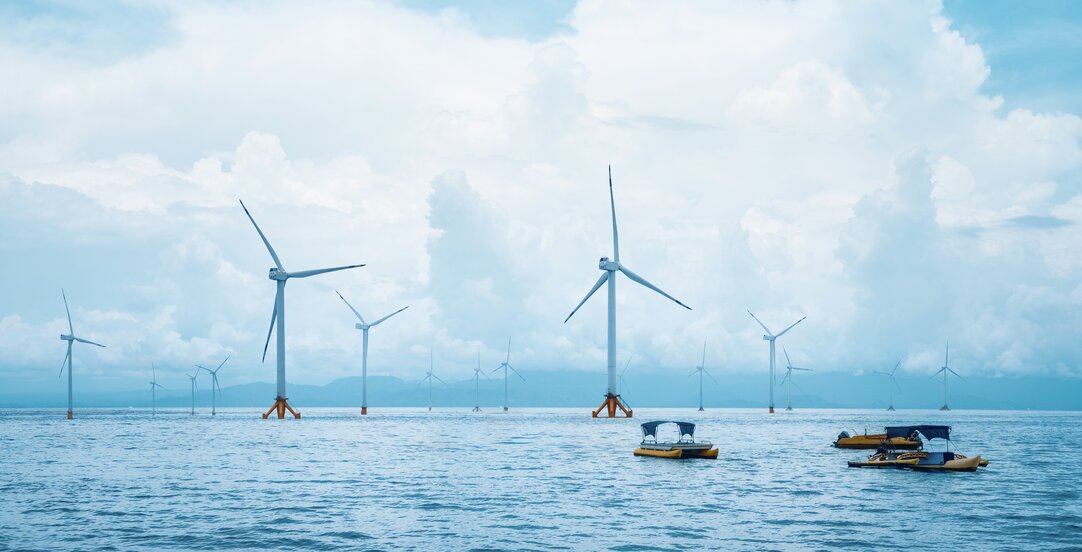Offshore wind projects in China: Key legal issues

For those who are interested in the Chinese offshore wind market, it is crucial to understand that the Chinese regulatory framework for this sector is complicated and comprehensive, covering the whole value chain.
Reading time 5 minutes
Offshore wind investments in China have been under the spotlight following a global wave of capacity increase in recent years. This article provides a general introduction to some key legal issues – such as corporate, licence, HSE, and maritime safety – related to project establishment and project construction for offshore wind EPC projects in Chinese waters.
1. Project establishment
Project permission
The owner of an offshore wind project (the “Owner”) is responsible for obtaining necessary administrative permissions for implementing the project. Meanwhile, the EPC contractor (the “Contractor”) may also be required by the Owner or the relevant regulations to obtain certain permissions/certificates to be deemed qualified. The following sets out the main requirements in order to obtain project permission:
1. Business licence
A business licence is a certificate of incorporation of a company. It is a document required for all businesses involved, including the Contractor, to be able to engage in any offshore project within China.
Responsible party(s): Owner and Contractor.
2. Feasibility study report
This report must be issued by a qualified professional institution that has analysed the feasibility of the project and must be filed with the relevant authority.
Responsible party(s): Owner.
3. Preliminary project siting (use of maritime area) opinion from competent local Oceanic Administration
The main purpose of this document is to ensure that the selection of a project site complies with the sea planning.
Responsible party(s): Owner.
4. Approval for wind power generation projects issued by the competent National Development and Reform Commission (“NDRC”)
This is an important approval as well as a material step for the project permission.
Responsible party(s): Owner.
Selected issues to be aware of
It is important to keep in mind that before signing of the EPC contract, the Contractor must review the above items to ensure the project is compliant.
It is also important to be aware that some documents are pre-conditions for obtaining the others. Documents no. 1-3 above must be obtained before document no 4. Document no. 3 must be obtained before starting an application for permits required for HSE (see below).
In addition, every year, the National Energy Administration and State NDRC will issue and publish a list of the wind power projects pre-approved for construction. Being included in this pre-approved project list is a pre-condition for obtaining documents 2-4.
Health, Safety and Environment (“HSE”)
A. Environment
1. Report and Report Form on Environmental Impact Assessment (“EIA”) with approval from the competent local Oceanic Administration
This report is to analyse the environmental impact which might be caused by the project. It must be issued by a qualified environmental impact assessment agency before one submits it to the authority. Failure to maintain an EIA entails risk of the project being terminated and/or fined.
Responsible party(s): Owner.
2. Certificate from local competent authorities that the project does not involve important, sensitive, and fragile ecological areas nor ecological red lines
Breach puts the project at risk of being demolished or relocated.
Responsible party(s): Owner.
B. Health, Safety
1. Review Opinions on Seismic Safety Assessment Report by administrative departments or institutions
Failure to obtain such document will put the project at risk of facing punitive fines.
Responsible party(s): Owner.
2. Review Opinions on Occupational Health Evaluation Report by competent Supervision and Administration of Work Safety
Occupational and operational safety is strictly regulated in China. Without this document, the project is at risk of being terminated or subject to punitive fines.
Responsible party(s): Owner and Contractor.
3. Registration of Offshore Facility with Offshore Oil Safety Department (“OSD”)
This is a procedural filing requirement and failure to do so will be subject to punitive fines.
Responsible party(s): Contractor.
Selected issues to be aware of
HSE is heavily regulated in China. There are various HSE-related registrations, approvals, and permits that must be obtained before project construction. The above overview is therefore not exhaustive and there are a variety of further documents and permits that should be obtained for employees engaged in offshore construction/supply work.
In addition to the documents and permits to be obtained from public authorities, Owners and Contractors are also required to establish a safety management system in accordance with the applicable laws and regulations overseeing the lifespan of an offshore project.
2. Project construction
The bidding process
Offshore wind EPC projects fall within the scope of “large-scale public infrastructure”. Pursuant to the Chinese Bid Invitation and Bidding Law, the surveying, design, construction, and supervision of the project, as well as the purchase of key equipment and materials for the project, are all subject to bidding procedures.
Construction permissions
1. Land planning permit for construction project
This permit is to certify that the project site meets the Chinese government’s planning for usage of the sea. Without this permit, the project risks being demolished or relocated.
Responsible party(s): Owner.
2. Project planning permit for construction project
This permit is needed to certify that the project construction meets the Chinese government’s facility planning. Without this permit, the project risks being demolished or relocated.
Responsible party(s): Owner.
3. Construction permit for construction project
This is a permit certifying that the selection, qualification, and capacity of the Contractor meets the requirements of relevant Chinese laws and regulations.
Responsible party(s): Contractor.
4. Maritime traffic permit
This permit must be obtained to ensure that the Contractor is able to conduct offshore construction work and use offshore vessels for the work.
Responsible party(s): Owner.
Selected issues to be aware of
All registrations, approvals, and permits which must be obtained at the project permission stage are preconditions for the government to grant all permits and give a green light for commencement of construction.
If the project needs to construct any submarine cables, a submarine cable routing and laying construction permit is required as well.
3. Conclusion
Even if the Chinese regulatory environment for offshore wind EPC construction projects might appear daunting, a well-regulated legal environment provides predictability, and our experiences evidence that the process can be manageable. However, knowing the requirements and planning well alongside experienced advisors is essential for Owners and Contractors in offshore wind projects. As the old saying by Aristotle goes, “well begun is half done”.


